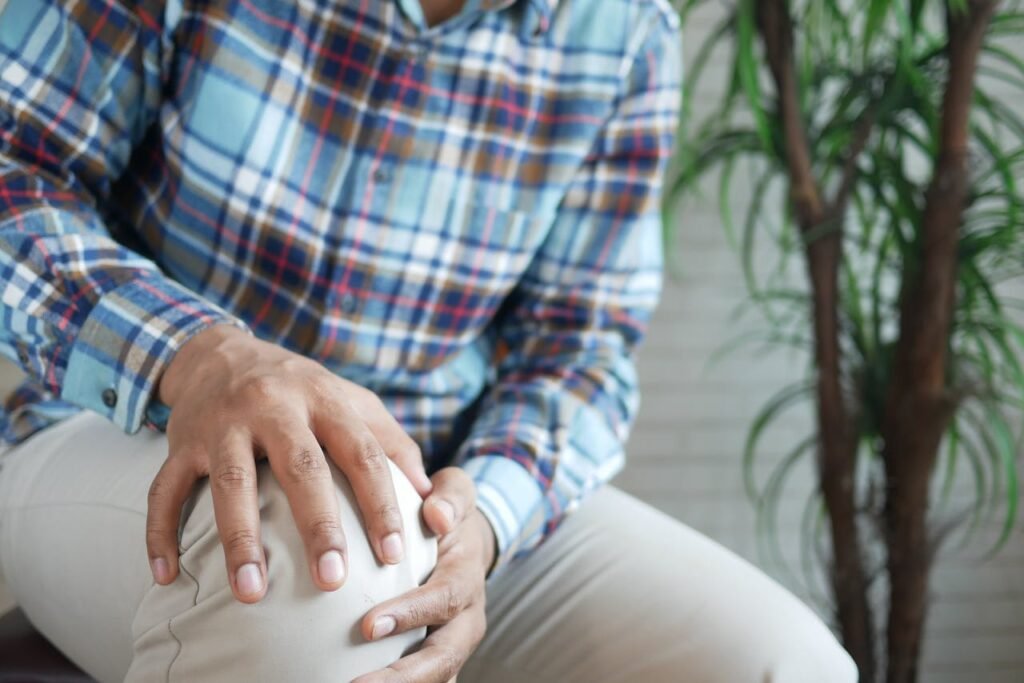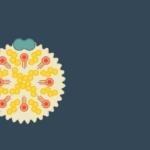Arthritis affects over 10 million people in the United Kingdom, making it one of the leading causes of disability and pain, according to Arthritis Action. The condition encompasses more than 100 different types of joint diseases, with osteoarthritis and rheumatoid arthritis being the most common. The NHS estimates that arthritis costs the UK economy over £10 billion annually in healthcare costs and lost productivity, highlighting the significant impact this condition has on individuals and society.
Understanding Arthritis: Types and Mechanisms
Arthritis literally means “joint inflammation,” though the term encompasses a broad range of conditions affecting joints, surrounding tissues, and other connective tissues. The Arthritis Foundation describes arthritis as a complex group of disorders with different causes, symptoms, and treatment approaches.
Major Types of Arthritis:
Osteoarthritis (OA):
The most common form of arthritis, affecting approximately 8.75 million people in the UK:
- Mechanism: Progressive breakdown of joint cartilage
- Primary affected joints: Knees, hips, hands, spine
- Age of onset: Usually after 40, increases with age
- Characteristics: Joint stiffness, pain, reduced range of motion
Rheumatoid Arthritis (RA):
An autoimmune condition affecting around 690,000 people in the UK:
- Mechanism: Immune system attacks joint lining (synovium)
- Pattern: Often affects multiple joints symmetrically
- Age of onset: Can occur at any age, peak onset 30-50 years
- Characteristics: Joint swelling, warmth, morning stiffness, fatigue
Psoriatic Arthritis:
Affects approximately 30% of people with psoriasis:
- Mechanism: Autoimmune inflammation affecting joints and skin
- Pattern: May affect spine, peripheral joints, or both
- Characteristics: Joint pain, skin plaques, nail changes
- Associated conditions: Increased cardiovascular risk
Ankylosing Spondylitis:
Primarily affects the spine and sacroiliac joints:
- Mechanism: Chronic inflammation leading to fusion of vertebrae
- Demographics: More common in men, usually begins in late teens/early twenties
- Characteristics: Lower back pain and stiffness, reduced spinal flexibility
- Genetic factor: Strong association with HLA-B27 gene
Gout:
Caused by uric acid crystal deposits in joints:
- Mechanism: Hyperuricaemia leads to crystal formation
- Common sites: Big toe, ankles, knees, wrists
- Characteristics: Sudden, severe pain attacks
- Risk factors: Diet, alcohol, genetics, kidney function
Joint Anatomy and Function:
Understanding normal joint structure helps explain arthritis mechanisms:
Cartilage:
- Smooth, elastic tissue covering bone ends
- Provides cushioning and allows smooth movement
- Contains no blood vessels or nerves
- Limited capacity for self-repair
Synovial Membrane:
- Lines the joint capsule
- Produces synovial fluid for lubrication
- Target of inflammation in rheumatoid arthritis
Synovial Fluid:
- Lubricates joint surfaces
- Provides nutrition to cartilage
- Changes in composition occur with arthritis
Supporting Structures:
- Ligaments provide joint stability
- Tendons connect muscles to bones
- Joint capsule encloses the joint space
Risk Factors and Causes
Arthritis development involves complex interactions between genetic, environmental, and lifestyle factors. The Arthritis Research UK identifies multiple contributing factors:
Non-Modifiable Risk Factors:
Age:
- Osteoarthritis risk increases dramatically with age
- Rheumatoid arthritis can occur at any age
- Cumulative joint wear and tear over time
- Age-related changes in immune system function
Gender:
- Women more likely to develop rheumatoid arthritis (3:1 ratio)
- Men more likely to develop ankylosing spondylitis
- Post-menopausal women at higher osteoarthritis risk
- Hormonal influences on joint health and inflammation
Genetics:
- Family history increases arthritis risk
- Specific gene variants associated with different types
- HLA genes particularly important in autoimmune arthritis
- Genetic factors interact with environmental triggers
Ethnicity:
- Variations in arthritis prevalence between ethnic groups
- Different genetic susceptibilities
- Cultural and lifestyle factors may contribute
- Access to healthcare and early intervention varies
Modifiable Risk Factors:
Obesity:
Excess weight significantly increases arthritis risk:
- Mechanical stress: Increased load on weight-bearing joints
- Inflammatory factors: Fat tissue produces inflammatory molecules
- Metabolic effects: Altered hormone and insulin levels
- Every kilogram of weight loss reduces knee arthritis risk by 50%
Joint Injuries:
Previous trauma increases future arthritis risk:
- Sports injuries, particularly to knees and shoulders
- Occupational injuries from repetitive motions
- Motor vehicle accident injuries
- Fractures involving joint surfaces
Occupational Factors:
Certain jobs increase arthritis risk:
- Heavy manual labour: Construction, farming, mining
- Repetitive motions: Assembly line work, typing
- Prolonged standing/kneeling: Flooring, cleaning
- Vibrating tools: Construction equipment, power tools
Infections:
Some infections can trigger arthritis:
- Bacterial infections: Direct joint infection or reactive arthritis
- Viral infections: Some viruses trigger autoimmune responses
- Tick-borne diseases: Lyme disease can cause joint inflammation
- Poor hygiene or wound care increasing infection risk

Recognising Arthritis Symptoms
Early recognition of arthritis symptoms enables prompt treatment and better outcomes. The Royal College of General Practitioners emphasises the importance of distinguishing between different types of arthritis based on symptom patterns.
Common Arthritis Symptoms:
Joint Pain:
- May be constant or intermittent
- Often worse with activity (osteoarthritis)
- May improve with movement (rheumatoid arthritis)
- Severity varies from mild to debilitating
Joint Stiffness:
- Morning stiffness: Characteristic of inflammatory arthritis
- Duration indicates inflammation severity
- May improve with gentle movement
- Can affect multiple joints simultaneously
Swelling:
- Visible enlargement of joints
- May feel warm to touch
- Can limit joint movement
- More common in inflammatory arthritis types
Reduced Range of Motion:
- Difficulty moving joints through full range
- May develop gradually or suddenly
- Can significantly impact daily activities
- Often correlates with pain and stiffness
Type-Specific Symptoms:
Osteoarthritis:
- Pain worse with activity, better with rest
- Joint stiffness after periods of inactivity
- Bone spurs may cause joint enlargement
- Crepitus (grating sensation) with movement
Rheumatoid Arthritis:
- Morning stiffness lasting more than 1 hour
- Fatigue and general unwell feeling
- Loss of appetite and weight loss
- Low-grade fever during flares
- Rheumatoid nodules under skin
Gout:
- Sudden onset of severe pain
- Joint becomes red, hot, and extremely tender
- Often affects big toe initially
- Attacks may last days to weeks
Red Flag Symptoms:
Requiring urgent medical attention:
- Fever with joint pain and swelling
- Rapid onset of joint symptoms
- Inability to move joint
- Severe pain unresponsive to usual measures
- Signs of joint infection
Diagnosis and Assessment
Accurate arthritis diagnosis requires comprehensive evaluation combining clinical assessment, imaging, and laboratory tests. The National Institute for Health and Care Excellence (NICE) provides evidence-based diagnostic guidelines.
Clinical Assessment:
Medical History:
- Detailed symptom timeline and progression
- Family history of arthritis or autoimmune conditions
- Previous injuries or joint problems
- Occupational and recreational activities
- Current medications and treatments tried
Physical Examination:
- Joint inspection for swelling, redness, deformity
- Palpation for warmth, tenderness, and swelling
- Range of motion testing
- Functional assessment of daily activities
- Examination of skin and other organs
Laboratory Tests:
Inflammatory Markers:
- ESR (Erythrocyte Sedimentation Rate): General inflammation marker
- CRP (C-Reactive Protein): Acute phase reactant
- Full Blood Count: May show anaemia in chronic inflammation
Autoimmune Tests:
- Rheumatoid Factor (RF): Present in 70-80% of RA patients
- Anti-CCP Antibodies: More specific for rheumatoid arthritis
- ANA (Antinuclear Antibodies): Screens for autoimmune conditions
- HLA-B27: Associated with ankylosing spondylitis
Other Tests:
- Uric Acid: Elevated in gout (though normal levels don’t exclude gout)
- Vitamin D: Deficiency common in arthritis patients
- Thyroid Function: Thyroid disorders can affect joints
Imaging Studies:
X-rays:
- First-line imaging for most joint problems
- Shows bone changes, joint space narrowing
- Useful for monitoring disease progression
- May be normal in early arthritis
Ultrasound:
- Excellent for detecting soft tissue inflammation
- Can guide joint injections
- Real-time assessment of joint movement
- Increasingly used in rheumatology practice
Magnetic Resonance Imaging (MRI):
- Superior soft tissue detail
- Can detect early cartilage changes
- Useful for spinal arthritis evaluation
- Expensive and not always necessary
Bone Scans:
- Detect areas of increased bone activity
- May identify early arthritis changes
- Less commonly used with improved MRI availability
Joint Aspiration:
When joint infection or crystal arthritis suspected:
- Sterile procedure to obtain joint fluid
- Microscopic examination for crystals or bacteria
- Culture to identify infectious organisms
- Can provide immediate pain relief
Treatment Approaches: Comprehensive Management
Arthritis treatment has evolved significantly, with modern approaches focusing on early intervention, disease modification, and maintaining quality of life. The British Society for Rheumatology advocates for multidisciplinary care approaches.
Pharmacological Treatments:
Pain Relief Medications:
Paracetamol:
- First-line treatment for mild to moderate arthritis pain
- Safe for most people when used appropriately
- Maximum dose: 4g daily (8 tablets of 500mg)
- Limited anti-inflammatory action
Non-Steroidal Anti-Inflammatory Drugs (NSAIDs):
Effective for pain and inflammation:
- Topical NSAIDs: Applied directly to affected joints, fewer systemic side effects
- Oral NSAIDs: Include ibuprofen, naproxen, diclofenac
- COX-2 Selective: May have fewer gastrointestinal side effects
- Require careful monitoring for side effects
Disease-Modifying Antirheumatic Drugs (DMARDs):
For inflammatory arthritis types:
Conventional DMARDs:
- Methotrexate: Gold standard for rheumatoid arthritis
- Sulfasalazine: Effective for various inflammatory arthritis types
- Hydroxychloroquine: Milder DMARD with antimalarial properties
- Leflunomide: Alternative to methotrexate
Biological DMARDs:
For patients not responding to conventional treatment:
- TNF Inhibitors: Adalimumab, etanercept, infliximab
- B-Cell Depletion: Rituximab
- T-Cell Costimulation Inhibitor: Abatacept
- IL-6 Inhibitor: Tocilizumab
JAK Inhibitors:
Newer oral medications:
- Baricitinib, Tofacitinib: Oral alternatives to biological drugs
- Work by blocking specific inflammatory pathways
- Regular monitoring required for side effects
Non-Pharmacological Treatments:
Physical Therapy:
Essential component of arthritis management:
- Exercise prescription: Tailored to individual needs and limitations
- Joint protection: Techniques to reduce stress on affected joints
- Pain management: Heat, cold, and electrical stimulation
- Education: Self-management strategies and home exercise programmes
Occupational Therapy:
Focuses on maintaining independence:
- Activities of daily living: Strategies for dressing, cooking, cleaning
- Joint protection: Techniques to minimise joint stress
- Assistive devices: Tools to reduce joint strain
- Workplace modifications: Ergonomic adjustments and adaptive equipment
Exercise and Physical Activity:
Regular exercise provides multiple benefits:
- Strengthening exercises: Build muscle to support joints
- Flexibility exercises: Maintain range of motion
- Aerobic exercise: Improve cardiovascular health and reduce fatigue
- Balance training: Reduce fall risk
- Low-impact activities: Swimming, cycling, walking
Weight Management:
Crucial for arthritis management:
- Even modest weight loss reduces joint stress
- Combined with exercise for optimal benefits
- Nutritional counselling may be helpful
- Realistic goal setting and long-term planning
Complementary and Alternative Therapies:
Evidence-Based Options:
Acupuncture:
- Good evidence for knee osteoarthritis
- May help with pain and function
- Generally safe when performed by qualified practitioners
- Consider as adjunct to conventional treatment
Massage Therapy:
- May provide short-term pain relief
- Can improve circulation and reduce muscle tension
- Choose qualified massage therapists
- Avoid during acute inflammatory episodes
Dietary Supplements:
Glucosamine and Chondroitin:
- Mixed evidence for osteoarthritis
- May provide modest benefit for some individuals
- Generally safe with few side effects
- Quality varies between products
Omega-3 Fatty Acids:
- Anti-inflammatory properties
- May benefit rheumatoid arthritis patients
- Best obtained from oily fish consumption
- High-quality supplements may be alternative
Turmeric/Curcumin:
- Traditional anti-inflammatory remedy
- Some evidence for osteoarthritis pain
- Generally safe as food spice
- Supplement quality varies significantly
Surgical Options:
When conservative treatments are insufficient:
Joint Replacement:
- Total joint replacement: Hip, knee most common
- Partial replacement: May be appropriate for some patients
- Excellent long-term outcomes for most patients
- Rehabilitation crucial for optimal results
Arthroscopy:
- Minimally invasive joint surgery
- Can remove loose cartilage or repair tears
- Shorter recovery time than open surgery
- Not suitable for all arthritis types
Joint Fusion:
- Eliminates joint movement to reduce pain
- May be appropriate for severely damaged small joints
- Sacrifices movement for pain relief
- Permanent procedure requiring careful consideration

Living Well with Arthritis
Arthritis need not prevent individuals from leading active, fulfilling lives. The Versus Arthritis charity emphasises that effective self-management, appropriate treatment, and lifestyle modifications enable most people with arthritis to maintain good quality of life.
Daily Life Strategies:
Joint Protection:
- Use larger, stronger joints when possible
- Distribute weight across multiple joints
- Avoid sustained grips or prolonged positions
- Take regular rest breaks during activities
Energy Conservation:
- Plan activities during times of lowest pain and stiffness
- Alternate heavy and light activities
- Use labour-saving devices and techniques
- Prioritise most important activities
Home Modifications:
- Install grab rails in bathroom
- Use ergonomic kitchen tools
- Arrange frequently used items at convenient heights
- Consider stairlifts or ramps if needed
Work Considerations:
- Discuss reasonable adjustments with employers
- Consider ergonomic workstation setup
- Take regular breaks to move and stretch
- Explore flexible working arrangements if needed
Exercise and Physical Activity:
Getting Started:
- Consult healthcare provider before beginning exercise programme
- Start slowly and progress gradually
- Choose low-impact activities initially
- Listen to your body and rest when needed
Types of Beneficial Exercise:
Range of Motion Exercises:
- Gentle movements through full joint range
- Can be done daily
- Maintain flexibility and prevent stiffness
- Include in morning routine
Strengthening Exercises:
- Build muscle to support and protect joints
- Use resistance bands, light weights, or body weight
- Focus on muscles around affected joints
- Progress gradually to avoid injury
Aerobic Exercise:
- Improve cardiovascular health and stamina
- Reduce fatigue and depression
- Examples: walking, swimming, cycling
- Aim for 150 minutes moderate intensity weekly
Balance and Coordination:
- Reduce fall risk
- Improve proprioception
- Examples: tai chi, yoga, balance exercises
- Particularly important for older adults
Nutrition and Diet:
Anti-Inflammatory Eating:
While no specific “arthritis diet” exists, anti-inflammatory eating patterns may help:
- Mediterranean Diet: Rich in fruits, vegetables, whole grains, fish
- Omega-3 Fatty Acids: Found in oily fish, walnuts, flaxseeds
- Antioxidant-Rich Foods: Berries, leafy greens, colourful vegetables
- Limit: Processed foods, excessive sugar, trans fats
Weight Management:
- Maintain healthy weight to reduce joint stress
- Focus on nutrient-dense, lower-calorie foods
- Combine dietary changes with appropriate exercise
- Seek professional nutrition advice if needed
Hydration:
- Adequate fluid intake supports joint lubrication
- Water is the best choice for most people
- Limit alcohol, which can interfere with medications
- Monitor fluid intake if taking certain medications
Pain Management Strategies:
Heat and Cold Therapy:
- Heat: Warm baths, heating pads for stiff, achy joints
- Cold: Ice packs for acute inflammation and swelling
- Alternate heat and cold for some conditions
- Use for 15-20 minutes at a time
Stress Management:
Chronic pain and stress create a cycle:
- Relaxation techniques: Deep breathing, progressive muscle relaxation
- Mindfulness meditation: Helps change relationship with pain
- Counselling: Professional support for coping strategies
- Social support: Maintain connections with family and friends
Sleep Hygiene:
Quality sleep crucial for pain management:
- Consistent sleep schedule
- Comfortable mattress and pillows
- Cool, dark, quiet bedroom
- Limit caffeine and electronics before bed
- Address pain that interrupts sleep
Monitoring and Long-Term Care
Arthritis typically requires lifelong management with regular monitoring and treatment adjustments. The Royal College of Physicians emphasises the importance of ongoing care relationships.
Regular Monitoring:
Clinical Assessments:
- Regular appointments with rheumatologist or GP
- Joint examination and functional assessment
- Monitoring disease progression
- Medication effectiveness and side effect evaluation
Laboratory Monitoring:
- Regular blood tests when taking DMARDs or biologics
- Monitoring for medication side effects
- Assessing disease activity markers
- Vitamin D levels and other nutritional factors
Imaging Studies:
- Periodic X-rays to monitor joint damage progression
- MRI or ultrasound if clinical status changes
- Not necessary at every visit unless indicated
- Useful for treatment decision-making
Treatment Adjustments:
Medication Changes:
- Dosage adjustments based on response and tolerance
- Adding medications for inadequate response
- Switching medications for side effects or lack of efficacy
- Considering newer treatment options as they become available
Therapy Modifications:
- Updating exercise programmes as condition changes
- Adaptive equipment as function declines
- Home modifications for safety and independence
- Work accommodations as needed
Emergency Situations:
When to Seek Immediate Care:
- Signs of joint infection (fever, severe pain, redness)
- Inability to bear weight on affected joint
- Severe medication side effects
- Sudden loss of joint function
- Signs of serious drug reactions
Support Networks:
Healthcare Team:
- Rheumatologist: Specialist medical care
- General Practitioner: Primary care coordination
- Physiotherapist: Exercise and movement therapy
- Occupational Therapist: Daily living adaptations
- Pharmacist: Medication management and advice
Patient Support:
- Versus Arthritis: 0800 5200 520
- National Rheumatoid Arthritis Society: Specialist support for RA
- Gout Society: Information and support for gout sufferers
- Local support groups: Peer support and practical advice
The Future of Arthritis Care
Arthritis treatment continues advancing with new medications, technologies, and treatment approaches:
Emerging Treatments:
- Precision medicine: Genetic testing to guide treatment selection
- Regenerative therapies: Stem cell and platelet-rich plasma treatments
- Novel drug targets: New pathways for inflammatory arthritis
- Combination therapies: Optimising multiple treatment approaches
Technology Integration:
- Wearable devices: Activity monitoring and joint stress measurement
- Mobile health apps: Self-monitoring and medication adherence
- Telemedicine: Remote monitoring and consultations
- Artificial intelligence: Improved diagnostic accuracy and treatment prediction
Conclusion
Arthritis represents a complex group of conditions affecting millions of people worldwide, but effective management strategies enable most individuals to maintain good quality of life and functional independence. The key to successful arthritis management lies in early diagnosis, appropriate medical treatment, regular physical activity, and comprehensive self-management strategies.
Modern treatments, including advanced medications and evidence-based therapies, provide unprecedented opportunities for controlling inflammation, reducing pain, and preventing joint damage. Combined with lifestyle modifications such as regular exercise, weight management, and stress reduction, these approaches offer hope for improved outcomes and maintained independence.
Resources from organisations like Versus Arthritis, the NHS, and specialist societies provide valuable information and support for individuals living with arthritis.
Remember that arthritis affects everyone differently, and what works for one person may not work for another. Working closely with healthcare professionals to develop personalised treatment plans and accessing appropriate support services ensures the best possible outcomes for managing this challenging but treatable group of conditions.






